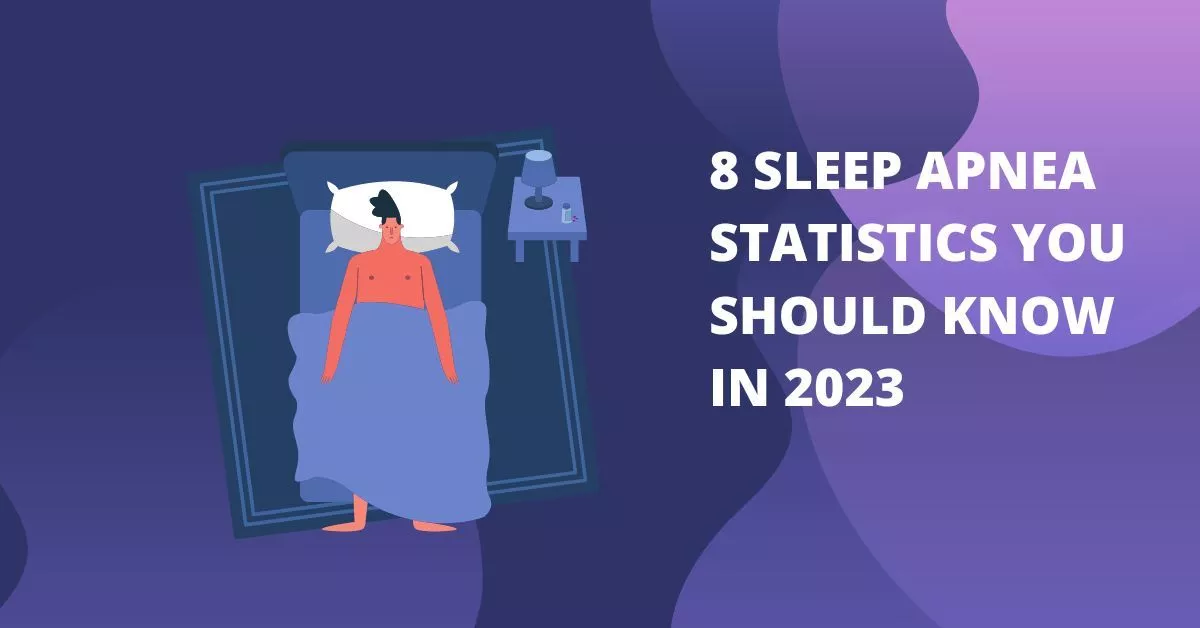8 Sleep Apnea Statistics You Should Know in 2023
Around 35% of all adults report (Sleep Apnea ) sleeping less than seven hours per night on average, and persons with specific medical issues, such as sleep apnea, have a tougher difficulty getting enough shut-eye each night, especially if they are undiagnosed. It’s simple to see why so many individuals are missing out on quality sleep and why getting treatment for sleep apnea is so vital when you look at sleep apnea statistics.
We’re looking at sleep apnea facts and figures to help you understand who is affected by the condition, how it affects the body, and why it’s so important to identify and treat it.
What Is Sleep Apnea?
sleep apnea statistics is a type of sleep-breathing disorder marked by a series of involuntary breathing events throughout the course of a single night’s sleep. Obstructive sleep apnea and central sleep apnea are the two most common kinds of sleep apnea. The most prevalent type of sleep apnea is obstructive sleep apnea. The apnea-hypopnea index (AHI), which represents the severity of sleep apnea and is computed by the number of apneas or hypopneas per hour of sleep, is used to classify sleep apnea. The AHI scale runs from 0 to 30, with 30 indicating severe sleep apnea.
What Are the Signs and Symptoms of Sleep Apnea?
Because the symptoms of sleep apnea can be modest (and moderate sleep apnea can manifest in a variety of ways), it’s distressing, but not surprising, that 75% of sleep-disordered breathing cases go misdiagnosed. The following are some signs and symptoms to keep an eye out for:
Headaches in the Morning
Excessive Sleepiness During the Day
Energy deficiency
Irregular Breathing Patterns During Sleep
Snoring, Gasping, Choking, or Coughing at Night
Urination During the Night
Depression
Gastroesophageal Reflux Disease (GERD)
Large Neck Size
Keep in mind that having one or more of these signs or symptoms does not necessarily mean you have sleep apnea. If you think you may have sleep apnea or another sleep disorder, consult with your doctor and arrange for a sleep study.
Who Is Affected By Sleep Disorder?
What is the prevalence of sleep apnea? All ages, genders, and races are affected by sleep apnea and other sleep-disordered breathing problems. Sleep apnea affects approximately 3% to 7% of males and around 2% to 5% of women. Sleep apnea affects twice as many males as it does women. Obstructive sleep apnea affects about 26% of individuals aged 30 to 70, and while 20% of children snore, only 1% to 8% of children aged 2 to 8 suffer sleep apnea. The prevalence of sleep apnea rises dramatically with age.
How many people suffer from obstructive sleep apnea?
You might be wondering what percentage of the population suffers from sleep apnea. Roughly 50 to 70 million adults in the United States suffer from a sleep problem, with an estimated 22 million Americans suffering from moderate to severe sleep apnea, putting the percentage of people with sleep apnea in the adult population at around 18 percent. Over 100 million people worldwide suffer from sleep apnea.
What Is the Prevalence of Sleep Disorder?
Mild Obstructive Sleep Apnea affects one out of every five adults. Obstructive Sleep Apnea affects one out of every fifteen adults. Sleep apnea is as common as diabetes and asthma in the United States, with about 24 million people having diabetes and around 20 million having asthma.
What Are the Risk Factors for Having Sleep Disorder?
Risk factors for sleep apnea include smoking, being overweight, nasal congestion, and family history. Alcohol and sedatives, and endocrine and metabolic disorders also raise the risk. Many people have undiagnosed sleep apnea, including 83% of type 2 diabetes patients.
Obstructive Sleep Apnea is a risk factor for multiple diseases like hypertension, stroke, and coronary artery disease. It’s also linked to heart failure and psychological conditions such as anxiety and depression.
What is a Sleep Apnea Patient’s Life Expectancy?
“A considerable, high mortality risk with untreated sleep-disordered breathing independent of age, sex, or BMI [which] underscores the necessity for treatment of sleep-disordered breathing characterized by frequent bouts of apnea and hypopnea,” according to a study. Sleep apnea can lead to a variety of health problems, including early mortality.
Is Sleep Apnea Linked to Other Chronic Health Problems?
Sleep apnea increases the risk of cardiovascular disorders, such as irregular heartbeats, hypertension, stroke, atherosclerosis, and coronary heart disease compared to those without sleep problems. Hypertension affects 43% of patients with mild obstructive sleep apnea and 69% of people with severe obstructive sleep apnea. In rehabilitation, up to 70% of stroke patients have substantial sleep-disordered breathing.
Lack of sleep can lead to chronic illnesses such as heart disease, diabetes, obesity, and depression.
Disclaimer
The information provided is for general knowledge only. Consult your doctor for personalized advice and treatment. Medikart HealthCare not liable for any actions taken based on this info.

